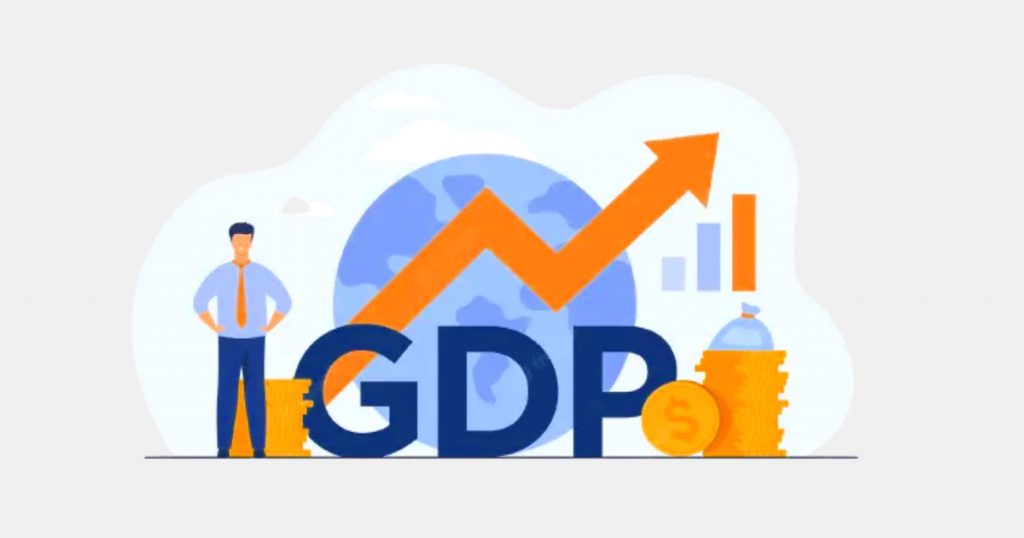
GDP: An indicator of economic condition of Nepal
Nepal the strength and health of any economy is generally assessed based on the value of goods and services. It produces in an accounting year, which is know as Gross Domestic Product (GDP). The Current economic condition of Nepal.
The branch/scope of economics that deals with estimating such values is National Income Accounting (NIA). Central Bureau of Statistics (CBS) is the central agency for responsible for publishing data relating to NIA in Nepal.
Either through product method, expenditure method or income method. The value of GDP calculated gives us the essence of national income.
Generally, higher and increasing GDP means the economy is in good shape and the nation is moving forward and vice-versa. But today the debates account regarding real economic welfare or standard of living measurement by GDP.
Other indicators such as Happiness Index. Human Development Index are also consider to be measures of economic welfare in current days.
In Nepalese context, it is often pointed out whether the GDP calculated shows the true picture of our economy given the significant volume of informal economy that remains unaccounted while calculating the GDP.
Although GDP might seem to be an abstract economic indicator in our context. It has been one of the key indicators that affects the decision making of policy makers. Along with GDP, the derivatives of GPD such as GDP per capita, debt to GDP ratio and remittance to GDP. Among others, are also use to evaluate the country’s economic condition.
Economic Condition Effect Looming crisis ahead?
In recent periods mainly due to the effect of Covid-19 pandemic. The global economy has been severely impact, and Nepal is no different. During FY 2020, the GDP of Nepal witnessed degrowth by ~2.4% which has rebounded by ~4.3% in FY 2021. Is forcast to grow by ~5.8% in FY2022, as per the CBS.
However, the international bodies like ADB and IMF have projected Nepal’s GDP growth at lower rates than that of CBS. Moreover, economy of Nepal is facing a crisis both on domestic as well as external fronts in recent period.
On domestic front, the banking liquidity crisis and soaring interest rates has negatively impacted the outlook of the economy. Whereas on the external front, poor remittance growth vis-à-vis increasing trade deficit. Low grant/receipts has affected its forex reserves as balance of payment of the country remains negative in recent period.
Owing to these reasons, many people are fearing on the fate of Nepalese economy. Its likelihood to fail alike some of the south Asian countries like Srilanka, Pakistan and recently Bangladesh.
Comfortable debt levels – sigh of relief
Although aforementioned countries are largely facing the economic crisis due to their looming debt crisis which are utilize mainly to fund unfeasible mega infrastructure projects. Nepal’s debt level has remained on a comfortable level as per various reports of IMF.
Nepal’s debt to GDP level remains largely on a safer zone of ~41% of GDP as of FY2021, out of which ~22% is external/foreign loans. Since Nepal largely receives subsidized loans from multilateral organisations like IMF and World Bank for a longer term. The debt obligations remain on a comfortable level. However, such debt levels have been increasing at an alarming rate which remains a concern.
In FY2017, the debt to GDP ratio was ~22.7% which has almost doubled in four years amid significant budget deficits.
Econimic Condition Of Nepal No Way Out?
The central bank of the country, Nepal Rastra Bank (NRB) has implemented various policies to curb the soaring trade deficit and discourage luxury imports like car and bikes. However, the sustainability of these import bans remains to be seen as it directly affects the government’s revenue collection.
Moreover, income tax slab revision is FY2023 budget is also expect to lower the government’s revenue collection. Hence, to finance the government’s expenditure amid moderation in revenue source. The government will have to take additional loans which will put pressure on the debt indicators of the country.
Thus, unless the country’s high import reliance is not offset by either internal production or significant improvement in inward forex receipts (through remittance, FDI or grants). The economic crisis on the external front will prevail.
And on domestic front, the bank credit is fuelling such imports and thus depleting the forex reserves. Owing to which the likelihood of NRB making any significant policy intervention to ease liquidity remains low in the near term.